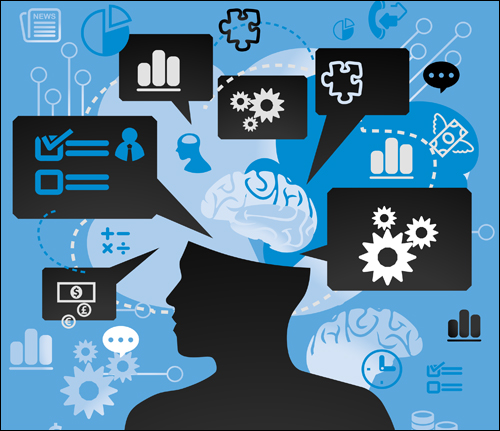It’s no secret that having the right connections is critical to personal and professional success. Or that many people worldwide are devoted to staying connected with friends, family and coworkers, and, increasingly, with devices in their homes and workplaces. So it’s no surprise that the Internet of Things (IoT)—a network that promises to connect everything and everyone everywhere to everything and everyone else—is a hot topic in business circles and the media.
The concept of ubiquitous connectivity—between people, machines or objects via the Internet—is seductive and the hype is growing. While the definition of the Internet of Things is still being debated, many companies claim they offer it and others want to know how to get it.
“The IoT is just the name we have given to what you get after 30 years of convergent evolution in Internet, wireless communi-cations, processors, memory, lightweight communications protocols, machine learning and sensors,” says Scot Stelter, VP of RFID and Internet of Things Research at ChainLink Research. “The IoT, like the Internet, makes a huge variety of applications economicallyfeasible and reliable for the first time.”
The IoT is not one network, but many. Some of these networks exist today, some are being developed and some are yet to be imagined. Researchers in China, for example, are developing a platform to track and monitor food from farm to retailer, and enable consumers to access information, such as expiration dates (see Improving Food Safety and Quality in China). The city of Nice, France, is creating a “Connected Boulevard” system that will continuously gather data on traffic, parking, street lighting, waste disposal and environmental quality, to enhance services for residents (see The Future Is Now for Smart Cities).
But all IoT applications have a common element: To connect the physical and digital worlds, the person, machine or object must be identified. And that’s where radio frequency identification comes in. While RFID will not be the only technology to identify “things” and connect them to the Internet, passive ultrahigh-frequency and Near Field Communication technologies are emerging as the two most likely standards.
Millions of assets are already being tracked and managed with passive UHF RFID tags,
because the tags cost much less than other wireless technologies and enable automatic processes. “There is no doubt that RFID is going to be a major part of the Internet of Things,” says Steve Halliday, president of High Tech Aid, an RFID consulting firm, and RAIN RFID, an organization dedicated to promoting adoption of EPC UHF RFID.
Halliday also acknowledges that the IoT is difficult to define, in part because it is composed of many different technologies. “I’ve been involved in standards committees for the past two years that are still trying to define what the IoT is,” he says. “You have to think about it in different layers.” Down at the bottom layer, the foundation of the IoT, are RFID tags and other technologies that identify things and allow them to communicate. “A key part of the IoT is knowing what you’re talking to,” he says. “That tag can interface to all sorts of sensors—whatever it is you’re trying to monitor—and can collect that data. Some of these RFID tags have real buses to the outside world available on them, so you can actually use them to send a command and control an actuator to turn something on or off.”
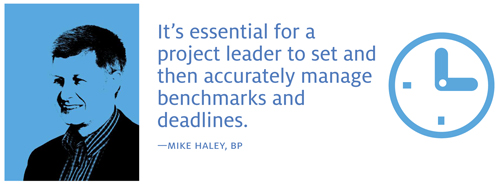
NFC, which is now in both Apple and Android smartphones, extends the IoT’s reach to millions of people, says Victor Vega, director of RFID and NFC solutions and marketing for NXP Semiconductors. The potential benefits for both consumers and businesses could soon extend far beyond the ability to replace credit cards with NFC-enabled mobile phones for payments, he says. The IoT can be a powerful way for businesses to communicate and collaborate with supply-chain partners and customers, improve processes and offer new services. A big benefit of the IoT is that it enables companies to collect and act on data in real time, says John Shoemaker, an executive VP at RFID provider Identec Solutions.
“The Internet of Things is about capturing data and presenting it in a way that allows decision-making that can be proactive, effective and a way to predict other actions,” he says. “Predictive analytics is going to be huge.” Businesses that want to develop an IoT strategy should start making the right connections now. Consider the following applications.
Automating Processes
RFID enables machines and objects to identify and authenticate each other, so they can allow the secure transfer of data between them. Companies can use this capability to automate replenishment, prevent theft, customize preferences, and manage maintenance and repairs.
Hospitals, for example, are using RFID-enabled cabinets, refrigerators and freezers from LogiTag or Terso Solutions to manage inventory of high-value medical supplies, such as stents, pacemakers and drugs. A passive UHF reader in a cabinet tracks when a tagged item is removed. Typically, a hospital staff member must swipe his or her RFID-enabled ID badge to unlock the cabinet and remove an item. Software is used to generate replenishment orders, maintain optimal inventory levels and monitor expiration dates. It can also trigger the vendor or distributor to bill the hospital for an item (see Terso Offers EPC-Enabled Medical Cabinets and New York Hospital Queens Tests RFID Inventory System).
The RFID solution enables the hospital and the vendor to adopt a consignment business model, which benefits both parties, says LogiTag’s CEO, Shlomo Matityaho. “We think the future of this technology is mainly to connect and to eliminate several layers of the supply chain,” he says. “The idea is to connect the point of use to the manufacturer or the logistics company. So then we can take several layers out.” LogiTag also offers the StockBox, which has a small footprint and can be placed in areas where there’s no space for a cabinet.
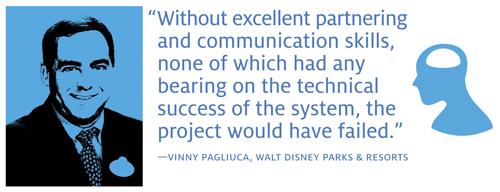
It also enables automatic restocking (see Bnai Zion Medical Center Expands LogiTag RFID Solution for Automatically Tracking, Reordering Stock). Love’s Travel Stops and Country Stores, a retailer that operates truck stops that sell fuel, food and supplies across 39 U.S. states, adopted the Fuel Island Management RFID-enabled antitheft solution provided by QuickQ. An RFID reader in a fuel pump automatically identifies and authenticates a tagged truck, and the pump locks up if the vehicle strays too far from it. This not only enables a truck driver to fuel up more efficiently, it also prevents fuel fraud (a few unscrupulous truckers have, in the past, sold fuel to another driver on the company’s account and pocketed the cash). In addition, the QuickQ solution includes DFConnect payment software, which is linked to Love’s point-of-sale system, to automate billing (see Love’s Tries RFID for Automating Fuel Payments).
Consumer electronics manufacturers that install NXP’s new NTAG I²C NFC chip in household appliances can improve their brands by enabling IoT applications for retailers and customers. The chip combines NFC technology with a built-in I²C interface, so users can communicate directly with a tagged device via a smartphone, and then access related information on the Internet (see Smarter Things).
Vega offers the example of a smart washing machine. A new owner could use his or her smartphone to access the machine’s serial number and quickly register the device with the manufacturer over the Internet. Then, advanced features on the machine could be accessed with a tap of the phone. If there were a problem with the device, an owner could retrieve detailed information about error codes and repair videos on the Internet. If necessary, a repair technician on a service call could tap his or her own phone to the washing machine to call up detailed customer information and repair history from the manufacturer, also via the Internet.
One of the benefits to manufacturers, Vega says, is that since the owner, technician and everyone else who interacts with the machine brings his or her own phone as an interface device, the screen and other potentially expensive interface elements don’t have to be built into the machine. “I’m not putting the cost inside this low-end mass-market device,” he says “There are devices out there with touch screens, and they have Wi-Fi and Bluetooth, but they’re expensive. The majority of users won’t pay for that.”
Building Customer Loyalty
You’re already using RFID to track and manage parts, products, work-in-process and other “things” within your own facilities and perhaps through your supply chain. You’re gathering a wealth of real-time data that’s helping you improve operations, lower costs and boost sales. But why stop there? Agricultural, logistics, manufacturing and retail firms are among those using the data to share information, such as the location, condition and origins of products, with clients and customers. That, in turn, engenders customer loyalty in a product or service.
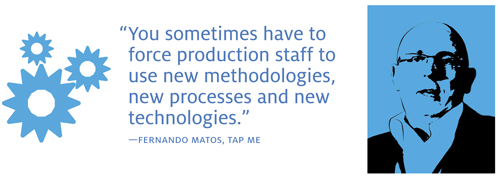
Take, for example, Almacafé, a subsidiary of the National Federation of Coffee Growers of Colombia, which is using RFID to track specialty coffee beans from farm to warehouse, and during processing and bagging for export. This enables the Federation to compete better in the global market, because clients want to know the regions and conditions that produced the specialty beans. They also want quick access to order status, which they can get by logging onto BeanTrack, a Web-based application. In addition, coffee connoisseurs can check the origins of their brew at a Juan Valdez Café or the coffeehouse chain’s website (see RFID Helps Ensure That Special Cup of Joe).
Brick-and-mortar retailers are also using RFID technology to engage customers in stores and compete with online shopping sites. U.S. jewelry company Ritani, for example, is deploying an RFID solution that enables retailers that sell its jewelry to automatically display information about merchandise and let shoppers share the items’ images and descriptions with friends or family members before and after making purchases. The UHF passive RFID solution will also let store managers know how often a particular item was viewed and whether it was purchased (see Ritani Creates RFID Solution to Engage Shoppers, Increase Sales).
At 32 of Bon-Ton‘s U.S. department stores, shoppers in the shoe department can use their NFC phones to learn more about each style, as well as whether it’s available at the store in a specific size and color—and if it’s not, how to get it most efficiently (see Bon-Ton Brings NFC to Shoe Displays). Similarly, Made, a designer-brand online furniture retailer, is employing an NFC solution that lets shoppers at the company’s London showroom access product information and create wish lists (see Online Furniture Retailer Adds RFID to Its Brick-and-Mortar Showroom).
In addition, NFC has become a popular marketing tool for myriad companies and organizations—including the Coachella Valley Music and Arts Festival, Vail Resorts and carmaker Lexus—that are using NFC phones, social media, and interactive ads and promotions to engage consumers and turn them into customers (see The New ‘It’ Tool for Branding Products and Services).
Remote Monitoring
RFID, often coupled with sensors, is enabling companies and organizations to monitor buildings, people and other things remotely. This makes it possible to improve efficiencies while reducing labor costs.
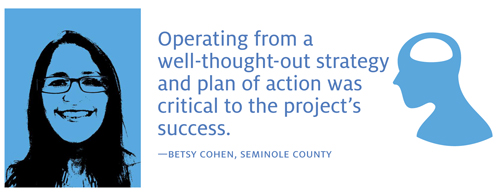
The Hong Kong Housing Authority, for example, has mandated the inclusion of RFID tags in building materials, including concrete blocks, wooden doors, aluminum window frames and metal gates, used in the region’s public housing projects. RFID is employed to control the quality of building materials, track building processes and make maintenance systems more efficient. Contractors must collect logistics and manufacturing information; the electronic records are stored on the Internet, along with maintenance and repair logs. Housing Authority managers and others involved can access the information quickly to address quality-control issues as well as life-cycle management. RFID is also used to monitor the collection and proper disposal of construction materials. Here, too, the information is stored on the Internet, so contract managers and government departments can verify that there was no illegal dumping.
Telemedicine, which involves collecting patient data and transmitting it to doctors remotely, can reduce hospital visits, provide a way for health professionals to care for an aging population, and allow the elderly to continue living in their own homes. Researchers are developing various RFID devices and solutions that wirelessly communicate a patient’s heart rate, temperature and other vital data (see Wearable Sensors for At-Home Patient Monitoring), as well as ensure that an elderly patient is taking his or her medicine (see Nyack Hospital Tracks Medication Compliance) and monitor daily activity to promote safe practices (see Helping Seniors Stay Independent).
In the United Kingdom, the Bath and North East Somerset branches of Bluebird Care are using an RFID solution to manage services supplied by home health-care providers. Aides are issued NFC mobile phones, which they tap against an RFID tag installed in a client’s home, to indicate when they arrive and leave. The phone also allows for calls, text messages and Internet browsing, while the software collects data regarding visits and gives workers details about the tasks they must complete at each site (see Gentag and AHC Debut NFC RFID Solution for North American Home Health Aides).
These RFID Internet of Things applications are just the beginning. Startup company Proteus Digital Health, for example, is developing an RFID sensor pill that is powered by stomach acids. A stick-on patch on a patient’s skin will act as a reader and pair with a smartphone. The system could track the dosage and time of medications taken, and send alerts to the patient and caregivers. “We seek to turn the moment you take your medicine into a digital interaction that connects you to your family and care team,” says Robin Suchan, Proteus’ communications manager.
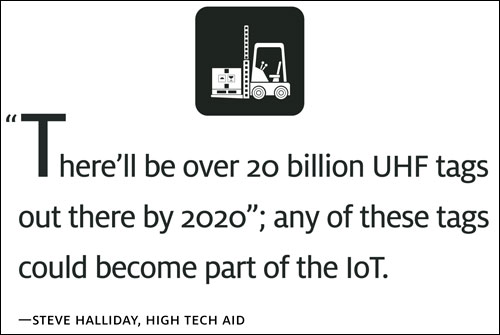
Manufacturers could use RFID to enable machines to recognize humans. In aerospace plants, for instance, there are many tools workers must be certified to use, and workers may need to be recertified every year or two. An RFID-tagged tool could recognize a tagged worker and go to the Internet to check whether his or her certification were up to date; if not, the tool wouldn’t allow the worker to operate it.
“There’ll be over 20 billion UHF tags out there by 2020,” Halliday says, noting that any of these tags could become part of the IoT. Similarly, NFC will become commonplace in myriad devices, enabling innovative IoT applications, Vega says. There’s no doubt companies can benefit from the Internet of Things today and in the not-so-distant future. Thinking about the IoT’s likely impact on business and global industry, Stelter says, “is like trying to say what the business benefits are of the Internet.”
Editor’s Note: In our upcoming November/December issue, we will examine RFID Internet of Things applications that employ the Electronic Product Code Information Services (EPCIS) standard for sharing data among supply chain partners.

